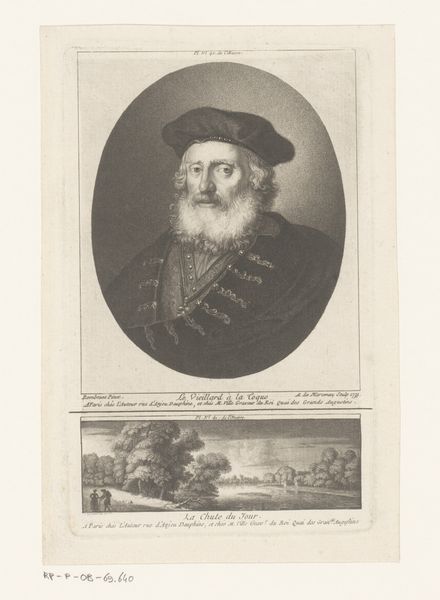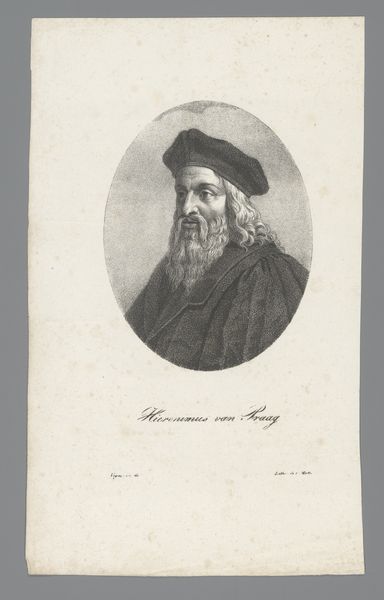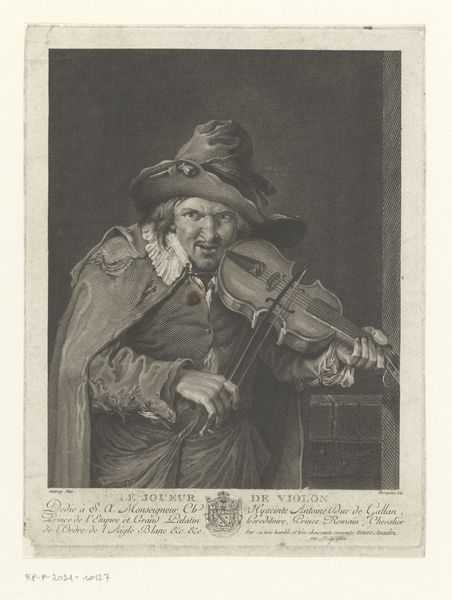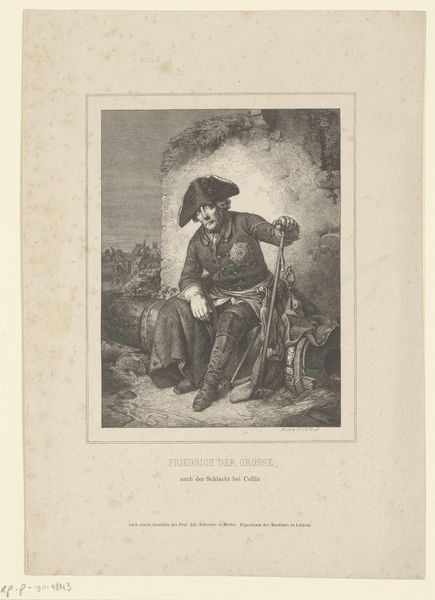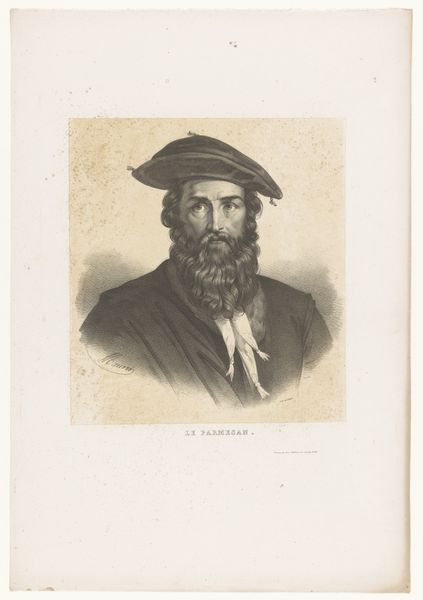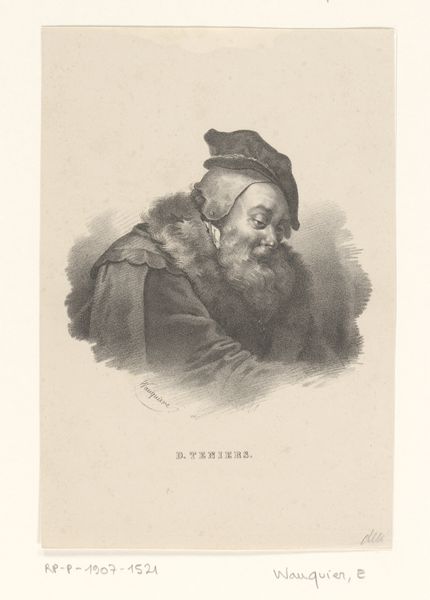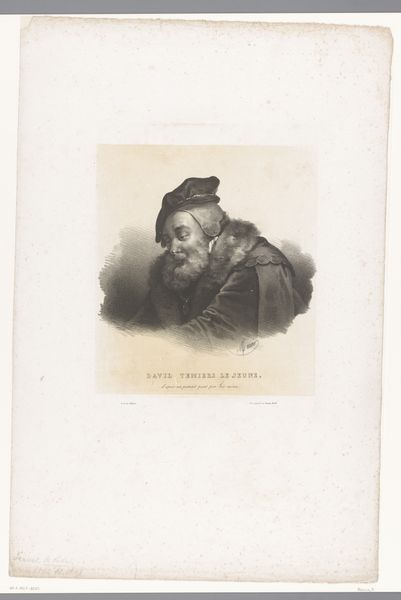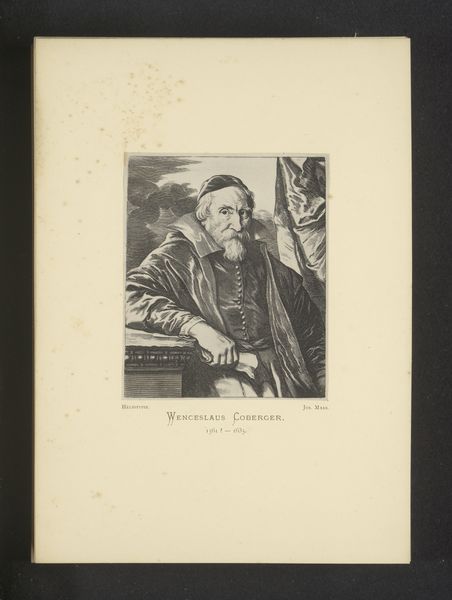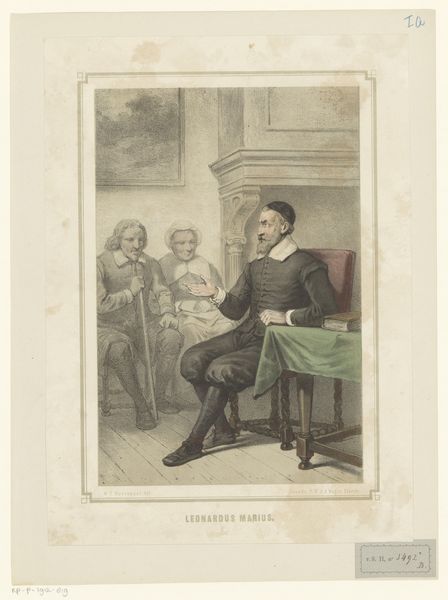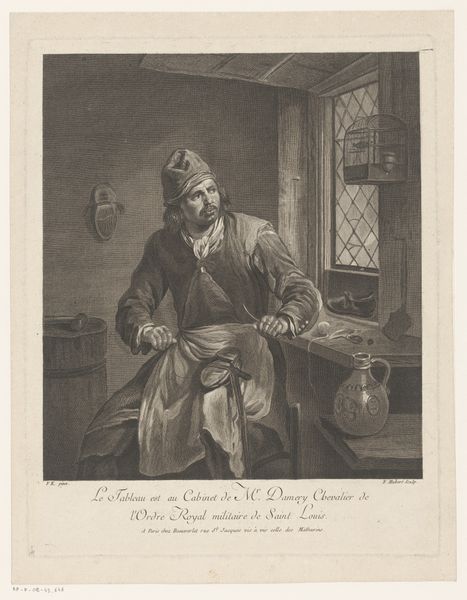
drawing, pen
#
portrait
#
pencil drawn
#
drawing
#
imaginative character sketch
#
light pencil work
#
pencil sketch
#
personal sketchbook
#
idea generation sketch
#
pencil drawing
#
sketchbook drawing
#
pen
#
pencil work
#
sketchbook art
#
realism
Dimensions: height 470 mm, width 345 mm
Copyright: Rijks Museum: Open Domain
Editor: Here we have Carel Christiaan Antony Last's "Portret van Joseph Asser Lehmans," made in 1842, a pencil and pen drawing. There's such incredible detail achieved with simple materials. What stands out to you about it? Curator: What interests me is the means of its production, and how it relates to the broader societal understanding of craft versus art during that period. Pen and pencil: readily available, inexpensive materials. This wasn’t some grand commission demanding costly oils. Editor: Right. It feels… accessible, somehow, even as a portrait of an important figure. Curator: Precisely. Think about the labor involved. Drawing, unlike painting perhaps, suggests a kind of direct, almost unmediated relationship between the artist's hand and the subject. No layers of glazing or complex chemical reactions, but the simple act of applying graphite or ink to paper. How might the intended audience perceive this drawing and the social class it represents? Editor: I suppose they'd see that it could be reproduced easily, that the skill was attainable through practice, not some innate talent requiring years of expensive training. Curator: Exactly! It democratizes image-making, placing it potentially within reach of a wider segment of the population, not just the wealthy elite who commissioned oil paintings. It makes you wonder about its reception. Was it admired for its skillful use of humble materials, or dismissed because it wasn’t seen as ‘serious’ art? Editor: That's a completely different way of approaching portraiture than I'd considered! It's easy to just think about the subject and their likeness, and miss the social implications of how it was made. Curator: It challenges traditional boundaries. Thinking about materials and production encourages a far more nuanced and relevant view. Editor: I'll definitely remember to look closer at the "how" and "why" of artistic creation going forward!
Comments
No comments
Be the first to comment and join the conversation on the ultimate creative platform.
